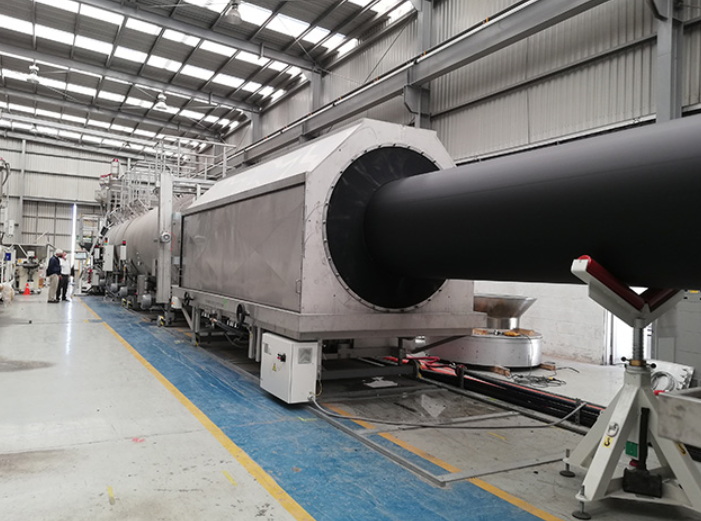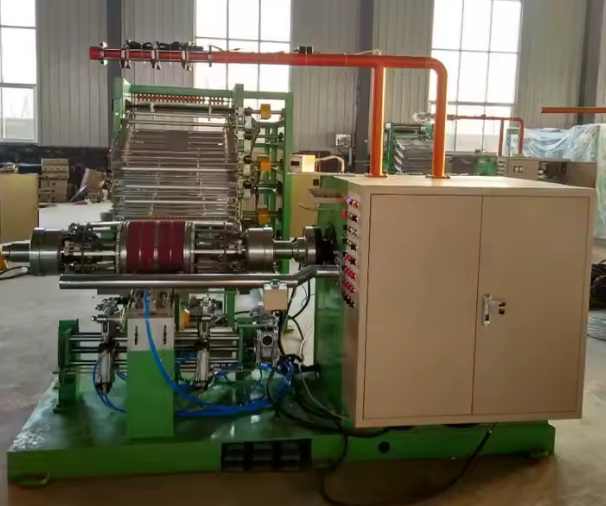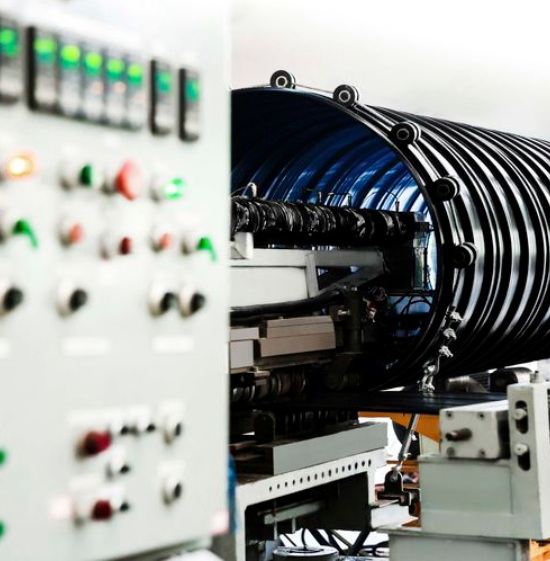Content Menu
● Introduction
● Understanding PVC Plate Extrusion Machinery
>> What is PVC Plate Extrusion Machinery?
>> Core Components of PVC Plate Extrusion Machinery:
>> Process Overview:
● Key Factors Affecting Efficiency
● Best Practices for Maximizing Efficiency
>> 1. Optimize Process Parameters
>> 2. Implement Rigorous Maintenance Regimens
>> 3. Enhance Material Handling
>> 4. Leverage Automation and Advanced Controls
>> 5. Minimize Material Waste
>> 6. Balance the Production Line
● Maintenance and Troubleshooting
>> Common Issues and Solutions:
>> Preventive Measures:
● Upgrading and Modernizing Your Extrusion Line
● Operator Training and Workforce Empowerment
● Quality Assurance and Process Monitoring
● Conclusion
● FAQ
>> 1. What are the most critical process parameters in PVC plate extrusion machinery?
>> 2. How often should PVC plate extrusion machinery be maintained?
>> 3. What are the common defects in PVC plate extrusion and how can they be prevented?
>> 4. How does automation improve the efficiency of PVC plate extrusion machinery?
>> 5. What are the benefits of upgrading to a twin-screw extruder for PVC plate production?
● Citations:
In the fast-paced world of plastics manufacturing, maximizing efficiency with PVC plate extrusion machinery is crucial for maintaining competitiveness, ensuring product quality, and achieving cost-effectiveness. This comprehensive guide explores the core principles, advanced strategies, and practical tips for optimizing your PVC plate extrusion line, from understanding machine components to troubleshooting common issues and leveraging modern automation.

Introduction
PVC plate extrusion machinery forms the backbone of many plastic manufacturing operations, enabling the continuous production of high-quality PVC sheets and plates for diverse applications. As market demands intensify and cost pressures mount, manufacturers must focus on extracting the maximum value from their extrusion lines. This article provides a detailed roadmap for achieving peak performance, minimizing waste, and ensuring consistent output with your PVC plate extrusion machinery.
Understanding PVC Plate Extrusion Machinery
What is PVC Plate Extrusion Machinery?
PVC plate extrusion machinery is a specialized system designed to melt, shape, and solidify polyvinyl chloride (PVC) into flat sheets or plates of specified thickness and width. The process begins with feeding raw PVC material—usually in pellet or powder form—into an extruder, where it is heated and conveyed by a rotating screw through a heated barrel. The molten PVC is then forced through a flat die, forming a continuous sheet, which is subsequently cooled, calibrated, and cut to length[5][10].
Core Components of PVC Plate Extrusion Machinery:
- Hopper: Feeds raw PVC material into the extruder[5].
- Extruder Barrel and Screw: Heats and conveys PVC, melting it into a homogeneous mass[4][5].
- Heaters and Temperature Control: Maintain precise temperature profiles for optimal melting[5][10].
- Die: Shapes the molten PVC into a flat sheet or plate[5][10].
- Calibrating and Cooling System: Ensures dimensional stability and rapid solidification[2][5].
- Haul-off Unit: Pulls the extruded plate at a controlled speed to maintain uniform thickness[2].
- Cutter: Slices the cooled plate into required lengths[5].
- Control System: Regulates temperature, pressure, speed, and other critical parameters[5][10].
Process Overview:
1. Feeding: Raw PVC is loaded into the hopper.
2. Melting: The screw conveys and melts the PVC in the heated barrel.
3. Extruding: Molten PVC is pushed through a flat die to form a continuous plate.
4. Calibrating & Cooling: The plate is shaped and solidified via cooling rolls or water baths.
5. Haul-off & Cutting: The plate is pulled and cut to the desired size.
6. Inspection: Final quality checks are performed before packaging[5].
Key Factors Affecting Efficiency
Efficiency in PVC plate extrusion depends on a combination of machine design, process parameters, material quality, and operator skill. The most influential factors include:
- Extruder Design: Twin-screw extruders offer superior mixing, energy efficiency, and a broader processing range compared to single-screw designs[4][5].
- Die Quality: High-quality dies ensure uniform thickness and minimal defects[10].
- Temperature and Pressure Control: Precise control prevents degradation, ensures proper melting, and maintains consistency[5][8][10].
- Material Handling: Clean, dry, and homogeneous PVC feedstock reduces contamination and defects[2].
- Automation: Advanced control systems reduce manual intervention and optimize process stability[10].
- Maintenance: Regular inspection and preventive maintenance minimize downtime and extend equipment life[7][10].
- Operator Training: Skilled operators can quickly identify and correct issues, maximizing uptime and product quality[7].
Best Practices for Maximizing Efficiency
1. Optimize Process Parameters
Fine-tune key settings such as:
- Barrel and Die Temperatures: Maintain within optimal ranges to ensure proper melting and flow. For example, typical die temperatures may range from 160°C to 180°C, with barrel temperatures adjusted by zone[8].
- Screw Speed: Adjust to balance throughput and product quality. Excessive speed can cause defects like melt fracture or uneven thickness[2][5].
- Haul-off Speed: Match to extrusion rate to prevent stretching or compression of the plate[2].
- Pressure: Maintain stable pressure to avoid air bubbles and ensure uniform filling of the die[5][8].
Regularly monitor and record these parameters, making incremental adjustments based on product inspection and data analysis[1][7].
2. Implement Rigorous Maintenance Regimens
- Routine Cleaning: Prevent build-up of degraded PVC, which can cause defects and reduce efficiency[3][7].
- Lubrication: Ensure all moving parts are properly lubricated to minimize wear[7].
- Component Replacement: Replace worn screws, barrels, and dies as needed to maintain performance[7][10].
- Calibration: Regularly calibrate temperature sensors, pressure gauges, and control systems[3].
3. Enhance Material Handling
- Storage: Keep PVC pellets or powder in a dry, clean environment to prevent moisture absorption and contamination[2].
- Pre-Drying: Use drying hoppers if necessary to remove residual moisture, especially in humid environments[2].
- Consistent Feed: Ensure a steady, uniform feed rate to the extruder to avoid fluctuations in product quality[5][8].
4. Leverage Automation and Advanced Controls
- Programmable Logic Controllers (PLC): Use PLCs for precise, real-time control of temperature, speed, and pressure[5][10].
- Automated Monitoring: Implement sensors and alarms to detect deviations and alert operators[10].
- Data Logging: Collect and analyze process data for continuous improvement and troubleshooting[1].
5. Minimize Material Waste
- Efficient Start-up and Shutdown: Develop procedures to reduce scrap during line changes and color transitions[7].
- Purging: Use purge materials effectively to clean the line between production runs[7].
- Quick Changeovers: Design dies and downstream equipment for rapid changeovers to minimize downtime[10].
6. Balance the Production Line
- Identify Bottlenecks: Ensure all components (extruder, calibrator, haul-off, cutter) operate at matched speeds to prevent backups or idle time[7].
- Synchronize Equipment: Use integrated control systems to synchronize the entire line for smooth material flow[7][10].

Maintenance and Troubleshooting
Common Issues and Solutions:
| Problem | Possible Cause | Solution |
| Yellowing of Plate | Overheating, insufficient stabilizer | Lower temperature, increase stabilizer6 |
| Curved Plate | Uneven roller temperature, plant air convection | Adjust roller temp, stabilize environment6 |
| Bubbles or Layer Separation | High melt temp, impurities, low melt strength | Lower temp, check raw materials, add blowing agent6 |
| Uneven Thickness | Mold lip gap, choke block, slip agents, temp | Adjust mold gap, choke block, slip agents, temp6 |
| Surface Stripes | High viscosity regulator, low temp, fast speed | Adjust regulator, increase temp, slow down6 |
| Chatter Marks | Die surface flaw, improper temp/pressure | Chrome plate die, optimize parameters8 |
| Overheating/Degradation | Excessive barrel temp | Monitor and control temp strictly56 |
| Melt Fracture | High extrusion speed, low melt temp | Lower speed, increase temp5 |
Preventive Measures:
- Schedule regular inspections of dies, screws, and barrels for wear or damage[3][7].
- Clean heating and cooling systems to prevent blockages and ensure uniform temperature control[3].
- Replace filters and screens to avoid contamination and pressure drops[3].
- Monitor for unusual noises, vibrations, or fluctuations in process parameters as early warning signs[7][10].
Upgrading and Modernizing Your Extrusion Line
Modern PVC plate extrusion machinery offers significant efficiency gains through:
- Advanced Temperature Control: Multi-zone heating and cooling for precise melt management[10].
- Energy Efficiency: Variable frequency drives, heat recovery systems, and insulated barrels reduce energy consumption[10].
- Automated Quality Control: In-line thickness gauges and defect detection systems ensure consistent output[10].
- Modular Design: Allows for quick adaptation to new products or materials, increasing flexibility[10].
- Remote Monitoring: Enables real-time data access and troubleshooting from anywhere[10].
When considering upgrades, evaluate the cost-benefit ratio, focusing on improvements that deliver measurable gains in throughput, quality, or energy savings[10].
Operator Training and Workforce Empowerment
A well-trained workforce is essential for maximizing the efficiency of PVC plate extrusion machinery:
- Technical Training: Ensure operators understand machine structure, controls, and process principles[9].
- Troubleshooting Skills: Teach identification and resolution of common extrusion issues[7][9].
- Safety Protocols: Emphasize safe operation, especially during start-up and maintenance[9].
- Continuous Improvement: Encourage feedback and suggestions from operators for process enhancement[7].
Empowered operators can proactively address minor issues before they escalate, reducing downtime and improving overall productivity[7].
Quality Assurance and Process Monitoring
Implement robust quality assurance protocols to maintain high standards:
- Regular Inspections: Check plate thickness, surface quality, and dimensional accuracy at set intervals[3][8].
- Process Documentation: Record all process parameters and adjustments for traceability and analysis[1][7].
- Statistical Process Control (SPC): Use SPC tools to detect trends and prevent defects before they occur[1].
- Customer Feedback: Incorporate end-user feedback into process improvements for continuous quality enhancement[1].
Conclusion
Maximizing efficiency with PVC plate extrusion machinery requires a holistic approach—combining advanced technology, optimized process parameters, rigorous maintenance, skilled operators, and a culture of continuous improvement. By focusing on these areas, manufacturers can achieve higher throughput, reduced waste, consistent product quality, and lower operating costs. As the industry evolves, staying abreast of technological advancements and best practices will ensure your extrusion line remains competitive and profitable.

FAQ
1. What are the most critical process parameters in PVC plate extrusion machinery?
The most critical parameters include barrel and die temperatures, screw speed, haul-off speed, and extrusion pressure. Maintaining these within optimal ranges ensures consistent melting, shaping, and cooling of the PVC, directly impacting product quality and efficiency[5][8][10].
2. How often should PVC plate extrusion machinery be maintained?
Routine maintenance should be performed daily, weekly, and monthly, depending on the component. Daily checks include cleaning and lubrication, while more in-depth inspections and part replacements should be scheduled monthly or as recommended by the manufacturer. Preventive maintenance minimizes unexpected downtime and extends equipment life[7][10].
3. What are the common defects in PVC plate extrusion and how can they be prevented?
Common defects include yellowing, warping, bubbles, uneven thickness, and surface stripes. Prevention involves optimizing process parameters, maintaining clean and dry raw materials, regular equipment calibration, and prompt troubleshooting of any deviations in the process[6][8].
4. How does automation improve the efficiency of PVC plate extrusion machinery?
Automation reduces manual intervention, ensures precise control of process variables, enables real-time monitoring, and allows for rapid adjustments. This leads to higher productivity, reduced scrap, and more consistent product quality[10].
5. What are the benefits of upgrading to a twin-screw extruder for PVC plate production?
Twin-screw extruders offer superior mixing, shorter melt times, reduced energy consumption, broader processing capabilities (including high-filler formulations), and improved product quality compared to single-screw designs. They are ideal for demanding applications and high-volume production[4][5].
Citations:
[1] https://jydjx.com/optimizing-production-with-pvc-pipe-extrusion-machine-lines/
[2] https://www.accextrusion.com/news/operating-plastic-profile-extrusion-machines/
[3] https://www.jwellmachine.com/what-are-some-common-challenges-associated-with-pvc-rigid-sheet-extrusion-and-how-can-they-be-addressed/
[4] https://www.prm-taiwan.com/blog/mastering-pvc-twin-screw-extruders-your-3minute-essential-guide_502
[5] https://jieyatwinscrew.com/blog/pvc-extruder-machine-everything-you-need-to-know/
[6] https://www.won-plus.com/blog/common-problems-and-solutions-in-the-production-process-of-pvc-boards_b31
[7] https://www.qiangshengplas.com/news/maximizing-efficiency-in-your-pvc-extrusion-line-tips-for-improved-productivity-and-reduced-costs/
[8] https://ieomsociety.org/proceedings/2023houston/297.pdf
[9] https://www.jwellmachine.com/precautions-during-the-operation-of-pvc-pipe-extruder-machine/
[10] https://www.caisumachinery.com/pvc-extrusion-machine-enhancing-production-efficiency/
[11] https://uplastech.com/pvc-sheet-extrusion-parameters/
[12] https://middletech.en.made-in-china.com/product/uZwTAgSjlXWz/China-High-Quality-and-High-Efficiency-PVC-Pipe-Extrusion-Machine-Line-Pipe-Making-Machine.html
[13] https://headland.au/plastic-machining/pvc-extrusion-machines/
[14] https://www.cowinextrusion.com/how-to-improve-the-extruding-efficiency-and-quality-of-screw-extruder/
[15] https://www.cowinextrusion.com/key-points-to-pay-attention-to-when-selecting-plastic-extruder/
[16] https://www.alibaba.com/showroom/pvc-extrusion-line.html
[17] https://jydjx.com/effective-maintenance-strategies-for-plastic-extrusion-machines/
[18] https://reifenhauser.com/en/company/media/news-and-stories/success-story/increase-productivity-plastics-extrusion
[19] https://www.sunwellglobal.com.tw/en/product/Plastic-Sheet-Extrusion-Lines.html
[20] https://www.jwellmachine.com/precautions-during-the-operation-of-pvc-pipe-extruder-machine/
[21] https://www.jwellmachine.com/upvc-extrusion-equipment-and-formula-adjustment/
[22] https://www.aliexpress.com/p/video/detail.html?itemId=1005007951517765
[23] https://www.trustymachine.com/faq.html
[24] https://www.jwellextrusions.com/products/pvc-sheet-extrusion-line/
[25] https://www.cowinextrusion.com/faq/
[26] https://www.jwellextrusions.com/faq/
[27] https://plasticextrusiontech.net/capabilities/capabilities-faqs/
[28] https://extruder-cn.en.made-in-china.com/product/VbqEdiUDrwcH/China-Plastic-Sheet-Extrusion-Machine-for-PVC-Sheet.html
[29] https://www.won-plus.com/blog/extrusion-technology-related-questions-and-answers_b40
[30] https://www.friendplasticmachine.com/quality-10166874-250mm-pe-pvc-hdpe-plastic-pipe-extrusion-machine-100-250kg-h-capacity
[31] https://crewhr.com/interview-questions/extruding-operators/
[32] https://www.link2westlake.com/resource/1652730681000/ProcessingGuides/RigidExtrusionProcessingGuide.pdf
[33] https://www.inplexllc.com/blog/plastic-extrusion-faq/
[34] https://jydjx.com/summary-of-extrusion-problems-of-pvc-pipe-production-line/
[35] https://www.leadertw.com/faq.htm
[36] https://www.cowellextrusion.com/key-factors-influencing-pvc-compound-quality-in-extrusion/
[37] https://www.prm-taiwan.com/blog/essential-tips-for-choosing-best-pvc-pipe-extrusion-line_508
[38] https://www.jwellextrusions.com/common-problems-and-solutions-of-pe-pipe-extrusion-line.html
[39] https://s3.amazonaws.com/entecpolymers.com/v3/uploads/content/Extrusion-Troubleshooting-Guide.pdf
[40] https://www.plastic-industry.com/sheet-extrusion-troubleshooting-2/






















